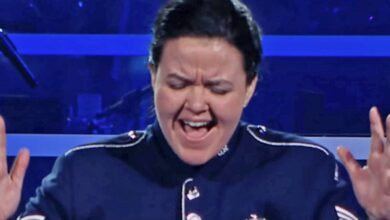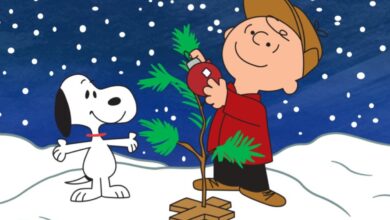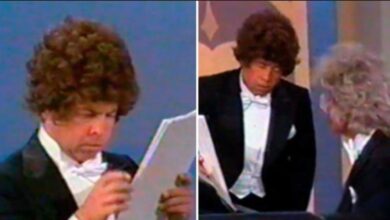The Four Tops’ “I Can’t Help Myself (Sugar Pie, Honey Bunch)” Becomes a Defining Sound of Motown and a 1965 Crossover Smash
When The Four Tops released “I Can’t Help Myself (Sugar Pie, Honey Bunch)” in April 1965, they weren’t just offering another catchy tune to a crowded market—they were cementing their place in music history. Written and produced by the powerhouse team Holland–Dozier–Holland, the song quickly soared to No. 1 on the Billboard Hot 100 and the R&B charts, capturing the spirit of Motown’s golden age with a blend of soulful vocals, infectious melodies, and irresistible rhythms. It would go on to become one of the label’s defining anthems and one of the most beloved tracks of the 1960s.
The Four Tops, consisting of Levi Stubbs, Abdul “Duke” Fakir, Renaldo “Obie” Benson, and Lawrence Payton, had already been performing together for over a decade by the time they found success at Motown. Originating from Detroit, Michigan, the group had a remarkable chemistry forged through years of club performances and backing work. Levi Stubbs’s voice, with its raw emotional power, set them apart in an industry where smoothness was often the norm. Their tight harmonies and stage professionalism made them a perfect fit for the ambitious vision Berry Gordy had for Motown Records.
The creation of “I Can’t Help Myself” stemmed from Motown’s desire to craft an even bigger hit after The Four Tops’ moderate success with “Baby I Need Your Loving.” Holland–Dozier–Holland, the genius songwriting trio behind so many of Motown’s hits, knew they needed a song that was simple, emotionally direct, and immediately memorable. Drawing inspiration from gospel call-and-response traditions and the universal appeal of unrequited love, they wrote a song filled with sweetness and longing. The repeated use of affectionate nicknames like “sugar pie” and “honey bunch” added a playful, intimate touch that made the track feel instantly familiar and endearing.
The recording sessions at Hitsville U.S.A.’s Studio A captured the signature “Motown Sound” at its peak. Backed by The Funk Brothers, the studio’s legendary house band, the track featured a bouncy bassline, vibrant horns, and a piano-driven rhythm that propelled it forward. Levi Stubbs, as always, sang from a place of deep conviction, his voice straining and soaring with an urgency that perfectly mirrored the lyrics’ themes of helpless infatuation. Producer Brian Holland insisted on multiple takes to capture just the right mixture of desperation and joy, creating a final product that felt both polished and full of raw emotion.
Upon its release, “I Can’t Help Myself” wasted no time capturing public attention. It climbed to the top of the charts in just a few short weeks and stayed there for two weeks, becoming The Four Tops’ first No. 1 hit. The song also crossed over onto pop charts around the world, solidifying Motown’s growing reputation for producing music that could unite black and white audiences alike. By the end of 1965, it had become one of the year’s best-selling singles and an enduring radio staple.
The cultural impact of the song was enormous. It helped cement the reputation of Motown as “The Sound of Young America,” a label that bridged racial divides at a time of significant social upheaval. The infectious optimism and emotional honesty of the song provided a musical common ground where listeners from all backgrounds could find joy, helping Motown acts gain mainstream acceptance on television and in live venues that had previously been closed to African-American artists.
For The Four Tops, “I Can’t Help Myself” was more than just a chart-topper—it was the launchpad for a new level of stardom. The song’s massive success opened doors to international tours, television appearances on shows like The Ed Sullivan Show, and a string of follow-up hits like “It’s the Same Old Song” and “Reach Out I’ll Be There.” Levi Stubbs’s reputation as one of the most emotive and powerful vocalists in pop music was cemented, and the group’s chemistry became a gold standard for vocal ensembles everywhere.
The influence of “I Can’t Help Myself” extended beyond the immediate impact on The Four Tops’ career. It helped define the sonic blueprint for what would become classic soul and pop crossover hits for the rest of the decade. Many artists and producers sought to emulate its tight arrangement, joyful tone, and emotional vocal delivery. The song’s success proved that heartfelt, uncomplicated themes combined with great musical craftsmanship could capture a universal audience without sacrificing depth.
Over the years, “I Can’t Help Myself” has been covered and interpreted by a wide range of artists, each putting their unique stamp on the classic. Legends like Donnie Elbert, Michael McDonald, and even the British ska band Madness offered their renditions. Yet none could quite replicate the original’s magic—a testament to the singular emotional punch that The Four Tops and Holland–Dozier–Holland achieved together.
Around the time of the song’s success, The Four Tops faced the evolving landscape of American music and culture. The Civil Rights Movement was gaining momentum, and Motown artists, whether intentionally or not, were ambassadors of integration and hope. Though they maintained a polished, apolitical public image, their very presence on mainstream radio and television marked an important step forward for racial representation in entertainment.
In the decades since its release, “I Can’t Help Myself” has maintained a powerful presence in popular culture. It remains a go-to song for films, commercials, weddings, and nostalgia playlists. Its timeless charm ensures it gets regular rotation on oldies stations and streaming playlists, and it frequently ranks highly on lists of the greatest songs of the 20th century, thanks to its enduring emotional appeal and musical brilliance.
The song also had a subtle but lasting impact on production techniques. The careful balancing of gospel-inflected vocals with bright, pop-ready arrangements influenced producers across genres, from the Philadelphia soul movement to early disco. The approach of blending heartfelt storytelling with danceable beats would later be adopted by countless artists striving to connect emotionally without losing mainstream accessibility.
Though The Four Tops would enjoy many more hits and eventually be inducted into the Rock and Roll Hall of Fame, “I Can’t Help Myself” remains one of the purest distillations of their talent and the magic of Motown. The song not only captured a moment in time but also created a sound that has echoed across generations.
Ultimately, “I Can’t Help Myself (Sugar Pie, Honey Bunch)” endures because it captures something universal—the giddy, helpless joy of being in love. Its timelessness lies in its simplicity, its soulful exuberance, and the unparalleled emotion Levi Stubbs poured into every word. More than a hit record, it became a piece of musical history, one that continues to inspire smiles, memories, and a little dancing, just as it did back in 1965.





